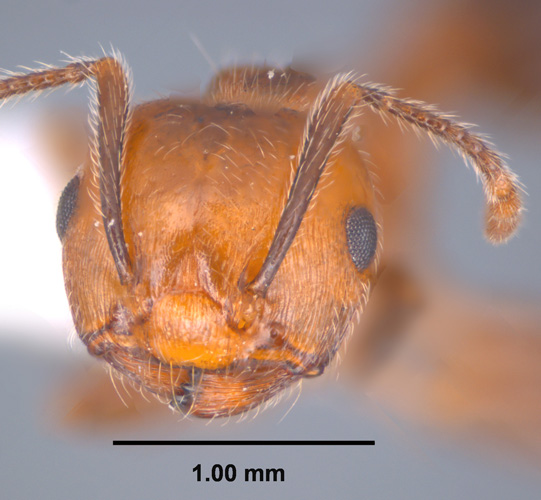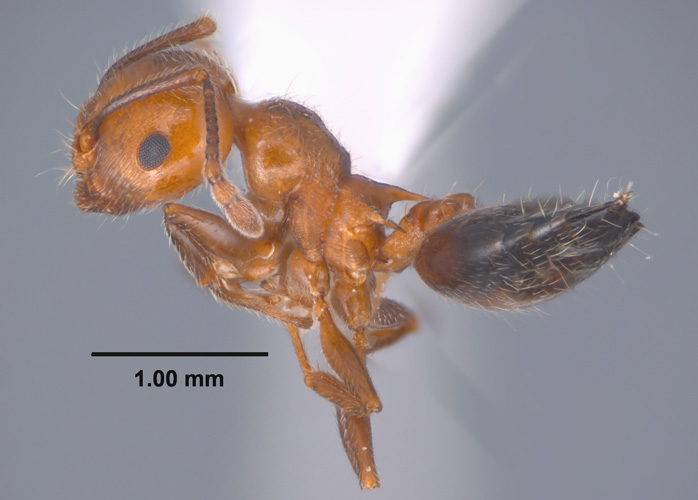Subfamily MYRMICINAE
Tribe CREMATOGASTRINI Crematogaster pilosa Emery |
Crematogaster pilosa, frontal view of the head of a worker (click image to enlarge). |
Crematogaster pilosa, side view of a worker. Notice the erect hairs on the head and the long spines (click image to enlarge). |
Crematogaster pilosa, side view of a worker (click image to enlarge). |
Ants in the genus Crematogaster are often referred to as acrobat ants because of their propensity to arc the gaster upward and over the alitrunk in a manner that resembles a contortionist or acrobat. They are small, monomorphic ants. Workers have an 11-segmented antenna, the presence of variably long propodeal spines, a flattened petiole, and a somewhat heart-shaped gaster. The postpetiole is attached to the dorsal surface of the gaster, and this characteristic will differentiate this genus from other genera in our area. Crematogaster pilosa is reddish-brown to nearly black or sometimes bicolored with the gaster darker than the rest of body, which may be reddish-brown. This species has long propodeal spines whose apices diverge from the longitudinal body axis (in dorsal view). The pubescence on the head and thorax is suberect or erect (at least some of them) and the hairs on the head do not lie in orderly rows (as in C. atkinsoni). Two to four (or occasionally more) erect hairs are present on each of the humeral shoulders of pronotum. The pronotal pleurae is mostly unsculpured with a large band having a smooth, reflective, or shiny surface. Crematogaster pilosa is a common species in this area that nests in logs, fallen branches, and in hollow stems of many species of plants (shrubs, grass, trees, forbes, etc.). Links |





